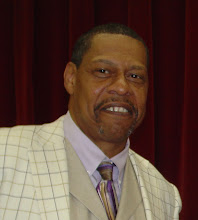In what has become an all too familiar scene for most of America, a man was attacked in his neighborhood by six youths and nearly beaten to death. What makes this case unusual to me is not that the victim was a white middle-aged man or that the accused are six black youths from an inner city. No, what makes this case unusual to me is the location of the case and the responses the case has received. First of all, is the fact that it made the New York Times; it is strange that they would do a story on a random mugging victim in another state. Secondly, is the fact that in an otherwise quiet neighborhood this case would receive the publicity it has gotten. I believe that there are forces at work here that are trying to reinforce the fear and segregation that plagues so much of the American landscape.
SHAKER HEIGHTS, Ohio — A week after six black teenagers nearly beat her husband to death, Marybeth McDermott looked out her big living room window at the neighborhood she loves, pursed her lips, then looked away.
She has found great friends here in the Ludlow neighborhood, one of the first places in suburban America where blacks and whites came together to live as neighbors. But for the first time in 19 years, Mrs. McDermott has thoughts of leaving.
For many outsiders, the attack on Mr. McDermott is seen as comeuppance for a community that seemed smug about its wealth, security and racial diversity.[1]
Shaker Heights is a suburb in Ohio just outside of Cleveland. The population here compared to most of America would be considered very diverse, it is 60% white and 34% black. Shaker Heights has embraced diversity and integration to the chagrin of many outside residents, who view the city as being a bunch of rich liberals who have no concept of the real world. The real world meaning that different races cannot co-exist together, I mean the nerve of these people thinking they can get away with such blasphemes. Rather than recognizing this for what it was, a random act of violence by some bad youths, the spin is to attack diversity by raising the issues of fear and safety.
Why is it that when something like this happens it is a harbinger of death and mayhem for all white people? Immediately there is a “rethinking” of living patterns and discussions of a black “crime wave” on the rise. Let’s face it folks we live in a violent society and every now and then it spills over to folks who are normally not at risk. For many this will be used as an excuse to reinforce previously held stereotypes and prejudices, but before contacting the realtor here are some statistics that might help to put this all in perspective.
Violent crime is not an equal-opportunity offender. Your chances of being attacked vary tremendously according to your age, race, sex and neighborhood. The risk of becoming a victim of a serious violent crime is nearly four times higher if you are 16 to 19 years old, for example, than 35 to 49; almost three times higher if you are black instead of white; two times if you are male, not female; and again double if you live in a city rather than in a suburb or in the country. Lump several of these risk factors together and the differences become enormous: For instance, the chances of a white woman 65 or older becoming a victim of serious violent crime are just one-seventieth the odds a black male teen faces. -- Your risk of being a victim does not increase as you make more money -- it actually declines. Although our poll shows that people with high incomes are about as afraid of crime as those who are less well off, your odds of being victimized are two to three times lower if you make $50,000 or more a year than if you earn less than $10,000. Ironically, the fact that crime rates are so low among the affluent may partly explain their outsized concern, according to Mark Cohen, a Vanderbilt University professor who specializes in the economics of crime. Says Cohen: "When you don't know what violence really looks like firsthand, you may have an exaggerated fear of it.[2]
For the city of Shaker Heights here is the latest statistic as compiled by the FBI.
The number of violent crimes recorded by the FBI in 2003 was 28. The number of murders and homicides was 0. The violent crime rate was 1 per 1,000 people.[3]
So, why does this story rate the NY Times? The reason is because it plays to the misguided fears of whites and their need to segregate themselves from blacks. The truth of the matter is that a divided country is easier to pillage for the wealthy, by promoting certain stereotypes and playing to certain fears groups who naturally have common interests are kept disconnected. If you are so busy worrying about the “black menace” then you won’t have time to notice the real crook at Enron. Instead of wondering why you have lost spending power, suffer from job insecurity, and have maxed out your credit just to maintain you are looking over your shoulder at the black folks. Today you have a better chance of losing your job or your pension than you have of losing your life to a black person. The folks at Enron stole more in two years than all the black criminals have stolen in your lifetime, yet the myths continue. The paranoia is encouraged and stoked by a steady diet of isolated news stories that are played up to be everyday occurrences.
The saddest part about this story is the responses of some other whites outside this community. In what is on the verge of spite many have spoken out against the diversity that characterizes this community, as if to say, “we told you so” or “you deserve it”. Many would have you believe that segregation promotes safety, the reality is it does not. By segregating ourselves what we do is confine many blacks to a life of inferior housing, which leads to an inferior education, which leads to inferior jobs, which leads to increased crime; all of which leads back to start the process all over again generation after generation.
For many outsiders, the attack on Mr. McDermott is seen as comeuppance for a community that seemed smug about its wealth, security and racial diversity.
“I wonder how much ‘tolerance’ the ‘progressive,’ snooty, pseudo-intellectual limousine liberal, socialists of Shaker Heights will show now that the thugs are in their neighborhood too,” a reader wrote on a Cleveland Plain Dealer blog.
Ludlow residents understand that for a place just seven blocks across, their little neighborhood carries tremendous symbolic weight.
“People in the Cleveland area resent us because we’re a repudiation of everything they believe,” said Brian Walker, 56, who was among the first African-Americans to attend Ludlow school. “We’re proof that white people and black people can live together.”
Rather than flee, Ludlow residents say they plan to stay and organize.[4]
[1] http://www.nytimes.com/2008/01/17/us/17shaker.html
[2] http://money.cnn.com/magazines/moneymag/moneymag_archive/1994/06/01/88911/index.htm
[3] http://www.epodunk.com/cgi-bin/genInfo.php?locIndex=17444
[4] http://www.nytimes.com/2008/01/17/us/17shaker.html?_r=1&adxnnl=1&oref=slogin&adxnnlx=1200589498-PEqGW3oCenCDODiKPbe1jA
Tuesday, January 22, 2008
Shaker Heights vs. America
Posted by
Forgiven
at
8:22 AM
![]()
Labels: Crime, Diversity, Integration, Shaker Heights
Subscribe to:
Post Comments (Atom)







 Stumble It!
Stumble It!
1 comment:
Oh but Shaker Heights is not safe! Having lived on the "south side" of Shaker for 20 years the area has seen a marked decline, with a murder a block from our home in the past couple of years, a body dumped in a yard a block away, the swat team called a block away to apprehend a murderer. And racial comments have been made to me by several young people as I do my yard work... minding my own business... the north-south streets are populated by many section 8 transients.... hardly a week goes by that mutiple police cars are called for some sort of problem...need I say more?
Post a Comment